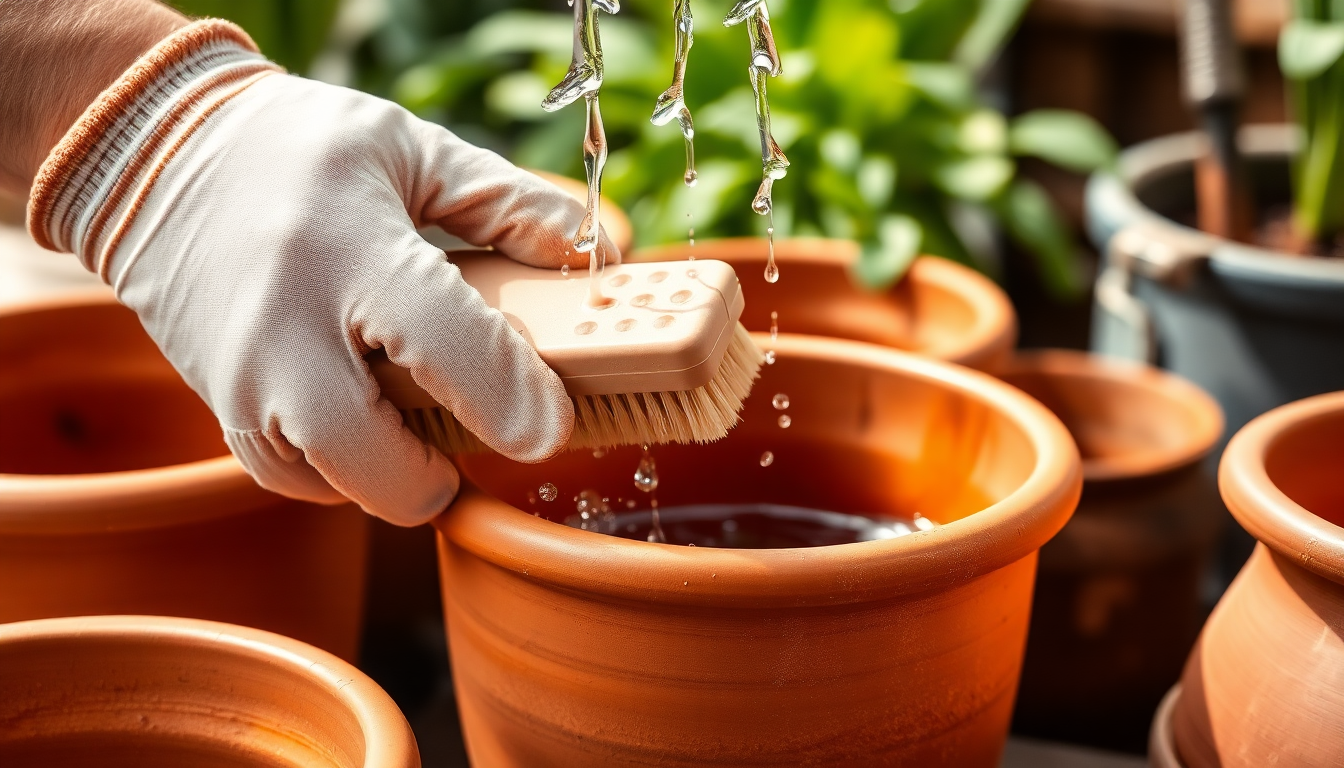As the owner of Idyl, an online plant and gardening supplies store in Bangalore's HSR Layout, I've seen my fair share of clay pots that have fallen victim to the dreaded algae and mold growth. It's a common problem that can not only make your pots look unsightly, but also compromise the health of your plants. That's why I'm excited to share my top tips for keeping your clay pots sparkling clean and free from these pesky invaders.
Understanding the Causes of Algae and Mold
Before we dive into the cleaning process, it's important to understand what causes algae and mold to grow in the first place. Clay pots are porous, which means they can absorb and retain moisture. This moisture, combined with the organic matter that can build up on the surface of the pot, creates the perfect breeding ground for these unwanted guests.
Algae, which are simple, plant-like organisms, thrive in damp, humid environments and can quickly spread across the surface of your clay pots. Mold, on the other hand, is a type of fungus that feeds on organic matter and can also take hold in these moist conditions.
Preparing Your Clay Pots for Cleaning
The first step in preventing algae and mold growth is to ensure your clay pots are properly prepared for cleaning. Start by removing any plants or soil from the pots, and give them a good rinse to remove any loose debris.
Next, use a stiff-bristled brush or a sponge to gently scrub the surface of the pots, focusing on any areas where you can see algae or mold starting to form. This will help to loosen up any stubborn buildup and make the cleaning process more effective.
Cleaning with Vinegar and Baking Soda
One of the most effective and eco-friendly ways to clean your clay pots is to use a mixture of vinegar and baking soda. This simple solution is not only highly effective at removing algae and mold, but it's also gentle on the porous surface of the clay.
To make the cleaning solution, simply mix equal parts white vinegar and water in a large bucket or container. Add a generous amount of baking soda and stir until the mixture starts to fizz. This chemical reaction will help to break down the organic matter that's feeding the algae and mold.
Once your cleaning solution is ready, submerge the clay pots in the mixture and let them soak for at least 30 minutes. This will give the vinegar and baking soda time to work their magic. After the soaking period, use a scrub brush or sponge to gently scrub the pots, paying extra attention to any stubborn spots.
Rinsing and Drying
After you've given your clay pots a thorough scrubbing, it's time to rinse them off. Use a hose or a bucket of clean water to rinse away any remaining vinegar and baking soda solution, making sure to get into all the nooks and crannies.
Once the pots are rinsed, it's important to let them dry completely before using them again. This will help to prevent any lingering moisture that could lead to future algae or mold growth. You can either leave the pots out in the sun or use a clean, dry cloth to wipe them down.
Maintaining Your Clay Pots
To keep your clay pots looking their best and prevent future algae and mold growth, it's important to establish a regular cleaning routine. Aim to clean your pots at least once a year, or more frequently if you notice any signs of buildup.
In between deep cleanings, you can also use a damp cloth to wipe down the pots and remove any surface-level dirt or debris. This will help to keep them looking fresh and prevent the accumulation of organic matter that can feed the algae and mold.
By following these simple steps, you can keep your clay pots in top condition and ensure that your plants thrive in a healthy, clean environment. Happy gardening!
Additional Tips for Preventing Algae and Mold
- Avoid letting your clay pots sit in water for extended periods, as this can create the perfect conditions for algae and mold to grow.
- Consider using a pot saucer or tray to catch any excess water and prevent it from pooling around the base of the pot.
- Ensure your pots have adequate drainage holes to allow excess moisture to escape.
- Rotate your pots regularly to expose all sides to sunlight, which can help to inhibit the growth of algae and mold.
- Consider using a clay pot sealant or coating to create a barrier against moisture absorption.
Remember, prevention is key when it comes to keeping your clay pots in pristine condition. By following these tips and establishing a regular cleaning routine, you can enjoy healthy, thriving plants for years to come.


0 comments